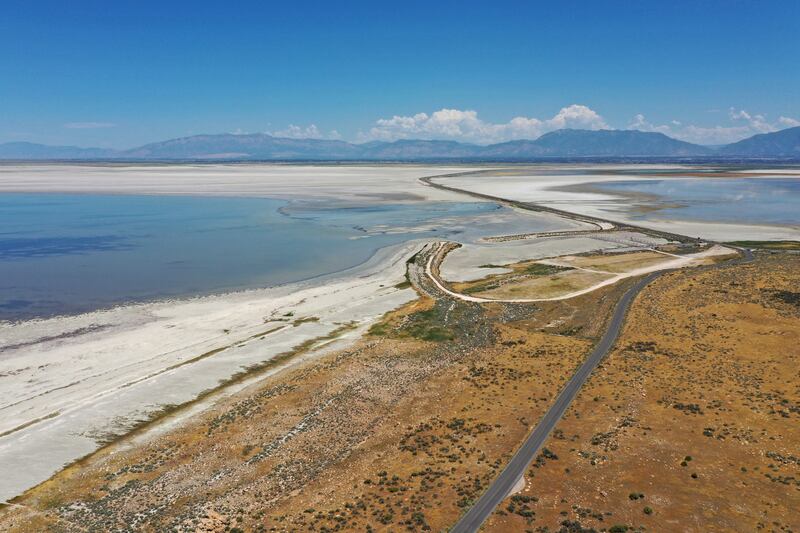On Thursday, the U.S. Senate passed the Great Salt Lake Recovery Act, legislation introduced by Sen. Mitt Romney, R-Utah, to study historic drought conditions and protect the long-term health of the Great Salt Lake, the largest saline lake in the Western hemisphere.
Earlier this month, the Great Salt Lake dropped to its lowest level on record for the second time in a year, posing a threat to Utah’s environment and economy. Utah GOP Reps. Chris Stewart, Burgess Owens and John Curtis lead the companion legislation in the House.
After the bill’s passage, Romney, Stewart, Owens and Curtis released a joint statement.
What the statement says: “The rest of the country is now understanding the widespread repercussions of a diminished Great Salt Lake. We must be willing to do whatever is necessary to make sure we preserve this iconic body of water. Today’s passage of our Great Salt Lake Recovery Act highlights the sense of urgency that is needed if we are going to preserve and protect this critical body of water for many generations to come. We are proud that our legislation complements and elevates the work already being done by Speaker Brad Wilson and the state of Utah to develop a permanent solution to save our Great Salt Lake, and we urge the House to take up it up so we can get it to the president’s desk and signed into law without delay.”
What the act proposes to do: The Great Salt Lake Recovery Act builds on Utah’s efforts to address the historic drought conditions of the Great Salt Lake and other saline lakes in the Great Basin in a number of ways. First, it authorizes the U.S. Army Corps of Engineers to carry out a program to monitor and assess the water availability and conditions of saline lakes in the Great Basin, including the Great Salt Lake, in order to help inform management and conservation activities for those ecosystems. The agency will then coordinate with other entities to implement the program, which comes with $10 million in funding.
It also directs a feasibility study to address drought conditions in the Great Salt Lake, which may include an identification of any potential technologies — including pipelines, coastal desalination plants and canal reinforcement — capable of redirecting water sources and necessary permitting to redirect water sources across state borders.
What caused the crisis: Utah and the rest of the West is in the unrelenting grip of a drought that scientists say is the worst in 12 centuries. Modern day diversions of its primary tributaries are sapping the water that flows to the lake, with now more than 800 square miles of its lake bed exposed.
A diminishing Great Salt Lake is an economic and environmental nightmare, jeopardizing a $1.32 billion asset that provides critical habitat for waterfowl and other wildlife, as well as extraction industries and tourism.
Rep. Blake Moore, R-Utah, is also sponsoring the Saline Lake Ecosystems in the Great Basin States Program Act, which is expected to pass the House on Friday as part of a Democratic spending package on wildfire and drought.
His spokeswoman, Caroline Tucker, said it is the only GOP provision in the package and has wide bipartisan support. It is another measure to better protect the Great Salt Lake.


